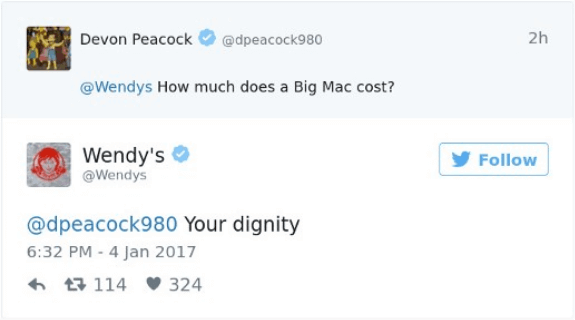
3 min read
Hey, what’s your story? This is something that we tend to ask strangers whenever we want to get to know them better. It also speaks to our inner need to tell stories about ourselves and shape experiences around a comprehensive narrative we can later tell others. And comprehension is key here — especially when life pulls us into different directions at once.
At this rate, it’s no wonder that we have always relied on stories whenever we had a great deal of complicated information to convey. To know someone well implies knowing their story — the moments that shaped their experience and the challenges that tested them. And if we want to reveal ourselves to others, we share stories of our childhood, first love, family, and so on.
So if stories bring people together, they bring consumers and brands together as well. But first, brands have to determine the story that they want to show to the world. Knowing this will help them define their narrative and compel others to follow their brand.
What Is a Brand Story?
The brand story narrates a sequence of events that prompted the launch of your company and describes in what way that narrative informs your brand mission today. If you have an engaging brand story, it will ensure that your prospects remember your brand, empathize with your offering, and ultimately develop an emotional connection to your brand.
Your Brand Story: How to Get Started?
The importance of brand storytelling cannot be understated. And to get a handle on this tactic, brands need a little bit of character development, a few plot twists, unlikely triumphs, accidental discoveries, and so on.
But what matters most is the focus: you’ll hear a lot of twists and turns, but at the end of the day what ties everything together are the overarching ideas. Each story can be summed up into an overarching message or piece of wisdom that ultimately stays with the reader. So here is everything you need to know about creating a unique brand story.
1.Make the Conflict Stand Out
What would The Three Little Pigs story be without the Big Bad Woolf attempting to blow down the pigs’ houses? Or what impact would Cinderella have without the presence of the wicked stepmother? If you take out the conflicting scenarios from these stories, nothing much would happen.
And if nothing much happens, there is little reason to care or at least remember a story. That’s because most good stories are centered around overcoming adversity. If you have a conflict, you have an emotional journey that people can resonate with. And this applies to the business world as well. In spite of the common misconception that brands should be conflict-free, adversities actually help them become more relatable in the eyes of the consumers.
After all, people do not appreciate perfection. They understand that nobody’s perfect, so why brands should be? Exposing imperfections and revealing a brand’s trajectory from misfortune to success is only likely to create a better impression with consumers. It also highlights a brand’s commitment to transparency and honesty in front of its audience.
2. Build a Happy Ending that Changes the Status Quo
Conflict is great to get people hooked on your story, but everyone is actually looking forward to the happy ending. And before you get there, you need to look for solutions to your conflict situation. And not just any solution, but a solution that changes the status quo and how things used to be done before the conflict took shape.
Describing how you found the solution will provide an emotional payoff to your audience and help them resonate with your story. Following this brand storytelling structure will also bring about a happy ending for the brand itself, as you are more likely to experience a stronger brand awareness and better perception as a result of your story. In turn, this means a bigger pool of loyal customers and an increased ROI.
3. Keep It Real
A conflict and a happy ending are the backbones of any good brand story. But to make it worthwhile, you need another element. Your story needs to be real. That’s because your brand is not fictional, it is grounded in reality.
Sharing a false story just because it might resonate with your audience is likely to raise concerns about how authentic your brand is. In turn, this will impact consumer trust in the marketplace and affect purchase decisions.
Example: : Wendy’s tweets were engaging, highly clever, and at times, laugh-out-loud funny.

Source: image 
The Stories You Tell Should Be the Stories You Hear
Telling a story is not one-sided. After all, your brand story is only as successful as the extent to which it resonates with your audience. And if they find it engaging enough, they are likely to share it with their community as well. Here is what you can do to facilitate that:
- Establish a social media presence. This is the fastest way to put your story out there and make sure it reaches a wide audience.
- Use every opportunity to tell your story. Incorporate your story in every touchpoint or platform and make sure you communicate it with every piece of content you share with your audience.
- Rely on your customers to spread the word. You can do this through customer testimonials that you can share on your website or other materials.

Source: image
From Storytelling to Reality
As much as you would like to stick to the realm of stories, reality has its own contribution. And it is likely to shape your brand story in the future. After all, your brand story is not just about your brand history and what brought your business to life. It should always remain relevant to the context of your business today.
To this end, it can act as a catalyst to help your business grow but also remain resilient in the face of change. In turn, these changes should fuel your brand story and keep it relevant over time.
The Xara branding hub
Whether you want to grasp the basics of branding for your new business, want to work on your brand strategy, are stuck with your brand visuals or want to find branding tips on how to grow your business, check out:
- Foundations — Learn the basics of branding
- Strategy — Plan your brand strategy
- Build Story — Build a brand 1: Your brand story
- Build Visuals — Build a brand 2: Your brand visuals
- Management — Control your brand: Brand management
- Growth — Grow your brand: Brand marketing
- Improvement — Improve your brand: The rebrand
- Measurement — Measure your brand: Brand analytics and KPIs